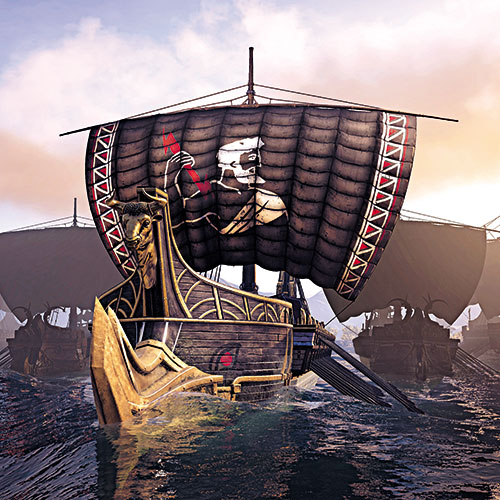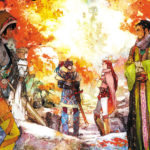Preview: How exploration mode fixes the formula in ‘Assassin’s Creed Odyssey’

Platform: Xbox One, PlayStation 4
Genre: Action
Developer/Publisher: Ubisoft
Rating: : M, for Mature
By Gieson Caecho | The Mercury News (TNS)
“Assassin’s Creed” games can be overwhelming. What was once a manageable 40-hour past time has transformed to a behemoth experience that is similar to one holding a second job. Playing a campaign sometimes feels like trying to suck a melon through a straw.
That could change with a shift in perspective and a new Exploration Mode in “Assassin’s Creed Odyssey.” The option is a new way to play the game and I previewed it at an event in San Francisco. Although seemingly small, the decision made a big difference in how one can approach the colossal campaign.
Usually, “Assassin’s Creed” games are flooded with markers. Players go to the icon, get the quest, and head over to the objective to finish it. They ping-pong themselves around a map, finish everything on a to-do list, and clear out the area. For the obsessive list-completers, the side quests meant to add value to the campaign become a laborious distraction.
Exploration Mode removes these icons and forces players to locate the mission goals by using clues given by characters. Thankfully, the hints are displayed on screen, and by looking at the map and visualizing the area, players can figure out where the objective is.
The move does two things for “Assassin’s Creed Odyssey.” First, it removes the stress of clearing the map. Players can feel free to explore the world naturally. They can wander around to find side quests. For instance, I ran into a man who has doubts about whether the gods are hearing his sacrificial offerings. He asked me to investigate.
Without the icon hanging over me, I didn’t feel as though I needed to do the quest immediately. I leisurely wandered around and was able to come back to it later. Somehow the gameplay felt more organic and fun and less like a demanding job.
Essentially, the Exploration Mode proves that ignorance can be bliss when it comes to “Assassin’s Creed” games. If players don’t know a quest is around the corner, they can focus on the task at hand. Players are no longer paralyzed by the number of choices they have on screen.
It made my experience from the opening act, which was the Battle of Thermopylae (made famous by the film “300”), to my first mission beyond Kephallonia Island go smoothly.
The introductory missions on the locale follow Alexios or Kassandra. The gender of the hero is the first choice players have in the game, but with the same lines and narrative opportunities, the two experiences mirror each other. So why make them two different heroes? The developer, Ubisoft Quebec, reveals the answer to that decision in flashbacks involving Alexio and Kassandra’s past.
With the option to choose how the protagonist reacts, players have a bigger role in the way they shape the world of “Assassin’s Creed Odyssey.” Some of those decisions can be difficult. I found this out early on in the Blood Fever quest. An outbreak happens at the village and Kephallonia authorities have killed everyone and burned it down.
The last survivors are a family who claim they’re not sick. Should players have mercy and let them live or are they too much of a risk for a reemergence of the infection? The decision has a lasting consequence on the island of Kephallonia. Other decisions are more personal as players have the opportunity to strike up conversations and even enter romantic relationships with secondary characters.
Secondly, “Assassin’s Creed Odyssey” redefines the combat strategy introduced in “Assassin’s Creed Origins” by including special abilities tied to an adrenaline meter. These powers, like Second Wind, which is obtainable at level 5, are crucial for survival. They heal the hero when the character is low on health or they muster a powerful attack when a player needs that extra bit of damage against foe. They’re vital in defeating mercenaries, who are powerful enemies comparable to Phylakes in “Origins.” Mercenaries appear more often as the protagonist progresses through the game.
My personal key to survival is to rely on bow-and-arrow shots to keep adrenaline up – this would allow players to use their special moves. Victory often means keeping some distance away from mercenaries to build “ammo” in the adrenaline meter for more powerful attacks.
Aside from the refined combat, another element that makes a return is full-fledged naval battles. This should make fans of “Assassin’s Creed Black Flag” happy. After the introduction, the protagonist becomes a mercenary leader and her ship, the Adrestia, is the home base that ferries her around ancient Greece.
Players will run across Athenian vessels and they can attack them using arrows and javelins. They also have the option to ram a weakened ship or board it just like pirates. The Adrestia becomes almost another playable character in “Assassin’s Creed Odyssey.” Players have a chance to power it up by adding lieutenants to it.
The hero adds these minions to their mercenary company by knocking out enemies in the world and recruiting them. Each adversary has different characteristics that can boost the ship’s stats such as archery attack. That means having a boat full of powerful lieutenants can mean the difference between life and death in the Aegean Sea.
Having played the game twice now, “Assassin’s Creed Odyssey” is shaping up to be an improvement over “Origins.” It takes the concepts of the previous title and refines them. It acknowledges the weaknesses of the design and fixes them in a subtle, but much-needed way. Players can begin exploring Ancient Greece on the Xbox One, PlayStation 4 and PC on Oct. 5.
———
©2018 The Mercury News (San Jose, Calif.)
Visit The Mercury News (San Jose, Calif.) at www.mercurynews.com
Distributed by Tribune Content Agency, LLC.











